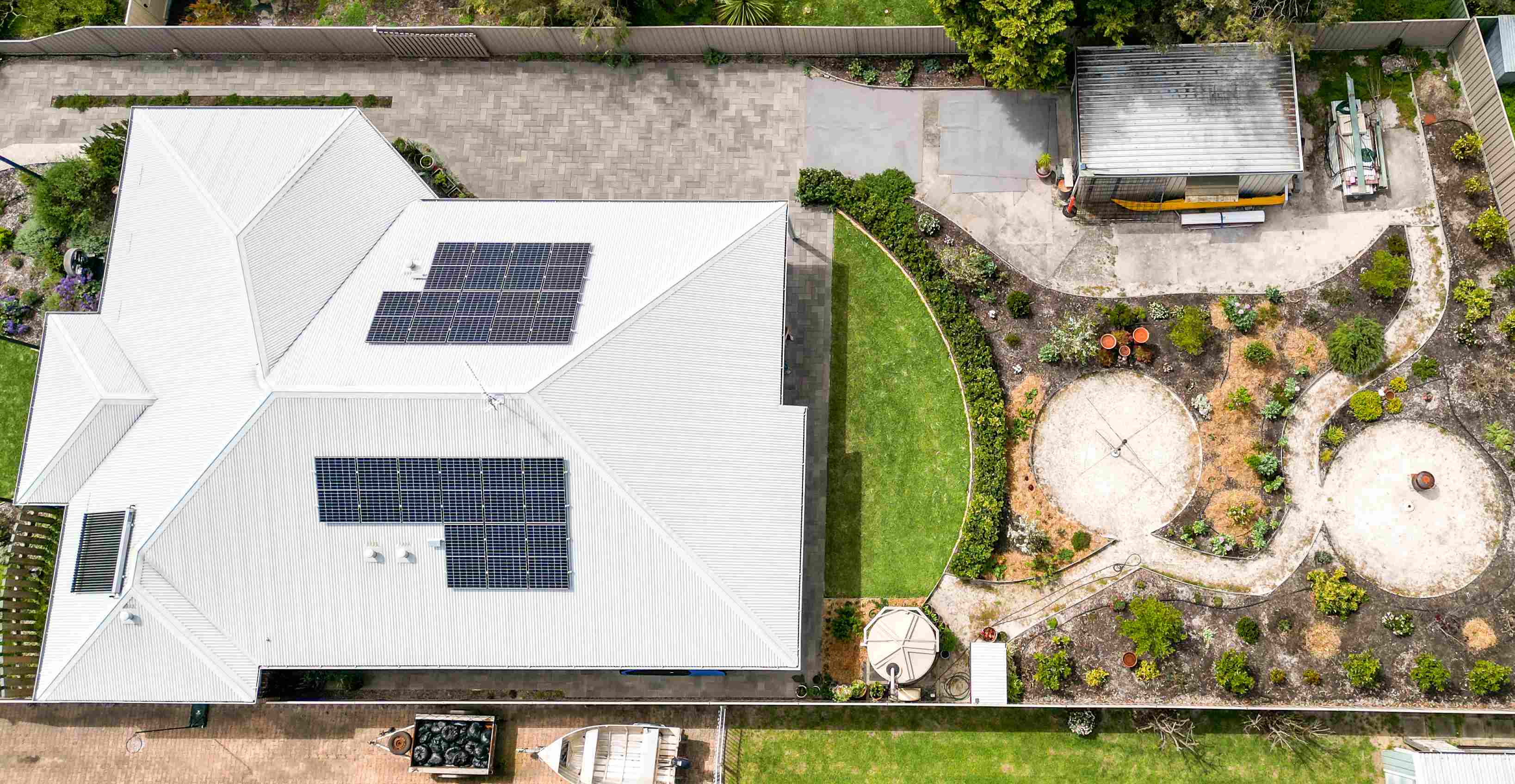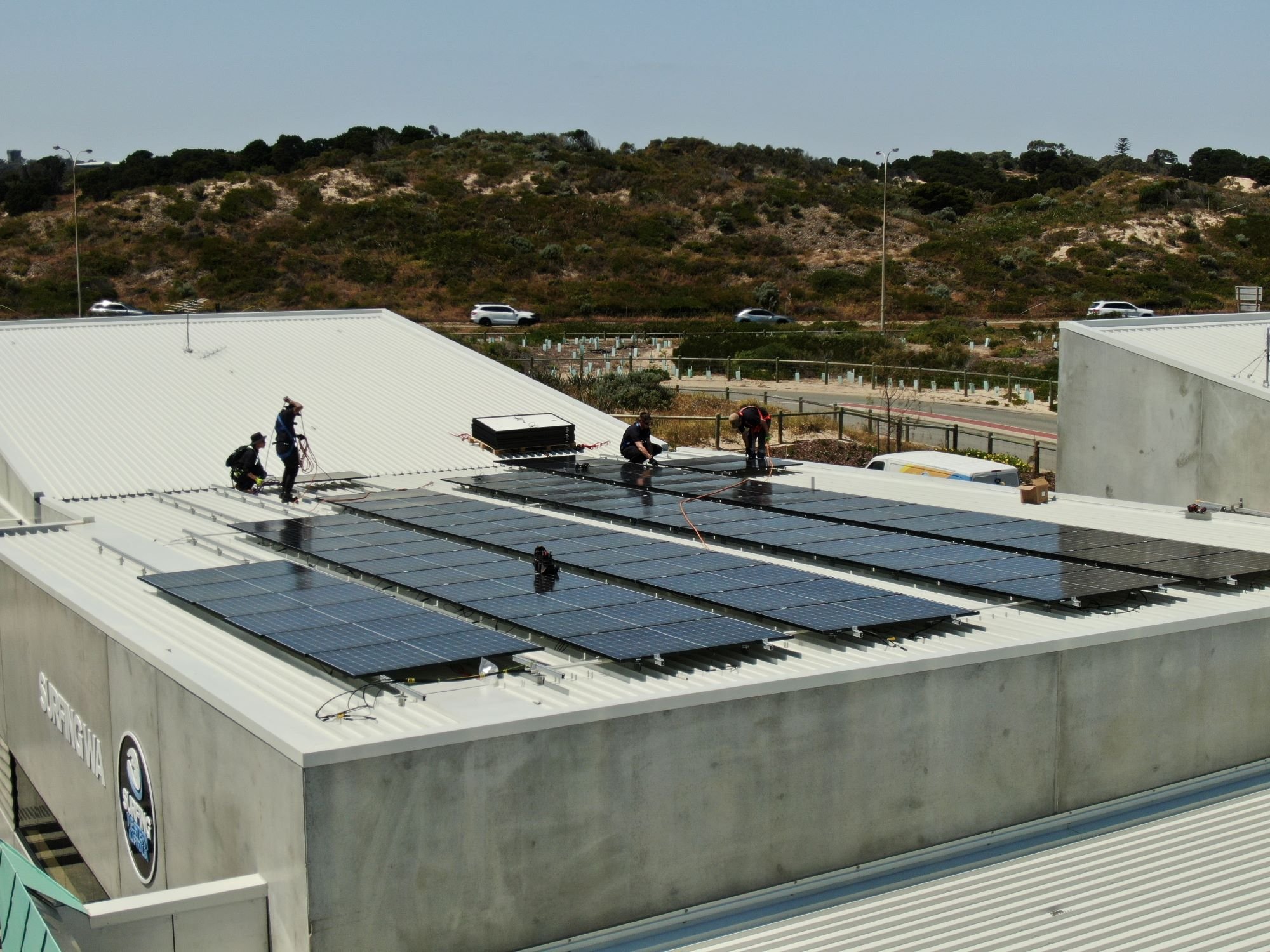The most significant benefit of a virtual power plant (VPP) is that it creates a power supply from various decentralised resources. This power can be fed into the electricity grid when demand exceeds available supply or to manage grid frequency issues. The decentralised power sources that comprise a virtual power plant are typically renewable, helping to lower the use of environmentally harmful and costly fossil fuels. Owners of the power sources used to support the electricity grid are compensated by the VPP aggregator who owns the VPP.
You may have seen Plico in the news recently because of our virtual power plant launch, the first in Western Australia’s history! Still, for most, virtual power plants are a mysterious and muddled technology, but it pays to do a little research to find out how a VPP could be beneficial for you.
What is a virtual power plant?
A virtual power plant is a decentralised energy supply created by many individual power sources. Solar batteries are most commonly used for virtual power plants that utilise residential solar systems. A central control system manages the power supply pooled from the source network. This system taps into the joint power supply and gives the grid an injection of power when it fails to meet demand. Virtual power plants can exist in either a residential or a commercial context.
To learn more about the definition of a virtual power plant, read our article What is a Virtual Power Plant?.
How does a virtual power plant work?
A virtual power plant takes excess energy produced by DERs and uses the central control system to move the energy to the electricity grid. The power sources of a VPP are typically renewable and include residential solar systems, or backup generators. The power from these sources is stored in batteries. The batteries must be compatible with the VPP software and meet the required performance specifications to be utilised in the VPP.
The sources of power in a virtual power plant are usually independently owned. Owners opt into being part of a VPP and are compensated (quite handsomely in the case of Plico’s VPP participants) by the VPP aggregator for the power used.
The VPP aggregator owns the central control system. It uses specialised software to connect, manage and distribute power throughout the system. The software connects all the power sources to create a decentralised power supply. When the grid faces an energy deficit, it can communicate this with the central control system, which will supply the necessary power. The houses that require power in the grid then receive it. The grid compensates the VPP aggregator for the power used.
Virtual power plant software
Virtual power plant software controls and manages the power within the VPP network. The three primary requirements of virtual power plant software are connection, aggregation of resources, and activation.
The first thing virtual power plant software must be able to do is to connect to and control all the distributed energy resources. Some software can handle different types of DERs, whereas others specialise in one type of DER.
The second necessary component of VPP software is its ability to aggregate the collection of DERs. The value of a virtual power plant comes from the collective pool of power it can utilise. The software must control this collective power and analyse the available capacity.
The third thing VPP software needs to do is to activate the VPP. This involves sending a signal to all the connected batteries in the system and requesting their power to be stored or sent to the grid.
Once this has been completed, the software needs to report on what occurred, including the amount of power utilised and process time.

Why do we need virtual power plants?
Australia needs virtual power plants for energy stability and efficiency, environmental conservation, and affordability.
Grid stability
Australia’s electricity grid is becoming increasingly unstable, increasing the risk of blackouts, load shedding, and powerless homes. The main factors for this instability are increased electricity demand and the growing issues of existing fossil fuel power plants.
Our cities and urban areas are continually getting denser and suburbs more congested, creating greater energy demand than previously existed, especially in peak times. This, coupled with the shutdown and increasing unreliability of ageing fossil fuel power plants, means energy demand rises while supplies become insecure. Virtual power plants help to stabilise the grid with clean energy.
Additionally, climate change has caused an increase in erratic and unpredictable weather incidents that hinder the grid. VPPs enable the grid to continue supplying power to households when it is under strain.
Higher efficiency
Virtual power plants are more efficient than traditional power plants as they minimise the losses in energy transfer. Power plants are often located far away from the houses they supply. This means that the electrical energy has to travel further distances. The longer the distance electricity travels, the greater the losses. Electricity losses primarily occur from heat dissipation in the power lines.
This means that transferring electricity becomes less efficient the further the power source is from the power load. A decentralised system like a VPP allows power to be sourced from locations nearer to the loads. This significantly cuts down the distance the electricity must travel. As a result, the energy transfer is much more efficient. Additionally, they only draw out the exact amount of power necessary. This prevents an excess of power generation.
Lessening our reliance on fossil fuels
It’s become indisputable that fossil fuels are the main contributors to climate change and the degradation of our environment. And reports such as the IPCC Climate Change 2022 Report clearly state that action is needed now. Virtual power plants are a balanced energy system created to connect renewable energy resources. Virtual power plants will be essential to our goal if we are to transition away from harmful materials such as coal for our energy needs and achieve our net-zero emissions target.
More affordable power for consumers
Virtual power plants can provide more affordable power to consumers. As energy prices continue to soar, virtual power plants offer a cheaper energy alternative. Renewable energy isn’t only great for the environment; most of the time, it’s free to generate! It’s just a matter of setting up the infrastructure, which we’re slowly completing.
Residential solar + battery systems have experienced rapid and streamlined advancements and are leading the way when it comes to solar in Australia. Virtual power plants are a further development that is a win-win for participants, as they increase the security of the grid but with lower costs. It’s just another way we’re levelling up our use of renewable technology.
Who benefits from a virtual power plant?
Virtual power plants provide benefits to four main groups. These are the power suppliers, the energy retailers, the grid and the households using the grid.
VPP members
Power suppliers, which include individual households and businesses with solar + battery systems, benefit from virtual power plants through financial compensation. They are offered different incentives depending on the owner of the virtual power plant they contribute to. Some energy retailers, or clean energy companies like Plico, provide direct compensation for the amount of power they are supplying. This allows power suppliers to make money from the power they generate with their solar + battery systems. The monetary compensation from a VPP is typically far higher than a solar feed-in tariff, due to the immediate nature of the energy being supplied. A possible incentive may be reduced power bills. Some energy retailers offer incentives related to solar batteries, such as installation discounts or longer warranties.
VPP aggregator
The VPP aggregator benefits by being compensated for the support the VPP provides to the grid. By creating a virtual power grid, a VPP aggregator helps the grid to remain stable. In return for providing this increase in stability, they receive financial remuneration for how much power they supply.
The VPP aggregator will receive revenue for managing the VPP, and a portion of this is distributed to the VPP members. Virtual power plants also benefit the power retailer, since they are more flexible and less expensive to set up than traditional power plants.
The VPP’s cloud-based design makes it less financially draining and frees up geographical space. In addition, because a VPP is decentralised, it doesn’t take up significant physical space like a traditional power plant. The assets are distributed across the grid network and orchestrated as one unit to provide support to the grid when needed.
The grid
The grid benefits from a virtual power plant by gaining stability. Virtual power plants ensure greater stability. They function as an auxiliary power supply. This can provide a boost to the grid when necessary. For example, the grid may need to utilise the VPP if it fails to keep up with household power demands during peak periods. Additionally, it could require the virtual power plant when facing issues that prevent it from getting adequate power.
Households and businesses
Virtual power plants give households greater stability by providing energy to the grid when demand exceeds supply. This reduces the risk of blackouts and load shedding, a significant inconvenience for homes.
VPPs also reduce the need for additional power plants to be created, keeping energy costs down. They can also provide clean energy to the grid instead of coal, gas or even the use of diesel generators, which everyone using the grid can feel good about.

Where are virtual power plants used?
Virtual power plants are used all around the world. Whilst testing and pilot programs have been done for virtual power plants for several years, only in the last few years have we seen VPPs implemented in commercial and residential contexts.
United States
New England was the first regional market in the United States to utilise a virtual power plant. It was established by solar company Sunrun and started with 5000 small-scale energy systems across Massachusetts, New Hampshire, Rhode Island and Vermont. Californian company Ohmconnect established a virtual power plant in 2021. They have over 150,000 customers across California. Sunrun has plans to expand into the California grid as well.
Europe
Virtual power plants have gained popularity in Germany since the post-2010s after Germany committed to closing its nuclear power plants. German power company Kraftwerke operates a virtual power plant in seven European countries. This VPP utilises power from several energy sources, including solar, wind and biogas. It provides services that include grid balancing, peak-load operation and power trading.
The UK has a small virtual power plant active on the Scottish island of Eigg. London’s first VPP was created in 2018 by UK Power Networks and Powervault. This network utilised 40 homes in Barnet, an area of London. This was expanded to include St Helier, London, in 2020. In late 2020, Tesla launched a VPP in the UK in partnership with Octopus Energy.
Australia
Australia has a handful of active virtual power plants. Australia’s virtual power plants are typically powered by solar energy, the country’s most prevalent renewable energy source. In 2020 a virtual power plant was installed by Tesla in South Australia. This was done by installing batteries at participants’ houses for no extra cost. Initially, 50,000 homes were included, with 3000 more added since then. AGL Energy has set up a VPP in South Australia and has expanded into Eastern states.
Western Australia has just launched its first virtual power plant, created by us!
Are there virtual power plants in Perth?
Yes, Plico has created and launched the first virtual power plant in Perth and Western Australia. Our VPP helps the Australian Energy Market Operator (AEMO) in times of high energy demand, and boasts one of Australia’s highest power supplies. Our solar + battery systems have provided necessary support to the Western Australian grid.
Members of Plico’s VPP, whose energy is used to stabilise the grid, will receive double the cost of the energy used. This allows members to make money from the energy stored in their batteries. Additionally, Plico remunerates the cost of any energy a member has to purchase from the grid during a VPP activation.
When Plico first launched its VPP in 2022, it committed 100% of the net revenue generated back to Plico members.
How does the Australian Energy Market Operator (AEMO) use virtual power plants?
The Australia Energy Market Operator (AEMO) uses VPPs to ensure the power demand can be met. AEMO manages electricity and gas systems in markets across Australia. They keep monitoring energy prices and grid stability and performance. In Perth, they are leveraging Plico’s virtual power plant as needed. When Perth’s grid needs a boost in power, AEMO can inform Plico, and the VPP can be activated to discharge energy from the decentralised supply to the grid.
Load Shedding
During the summer months, Australia gets very hot. This results in high levels of electricity usage from households for air conditioning. Suppose power sources can’t meet the demand of the homes connected to the grid, AEMO directs energy networks to load shed. This is when electricity is cut off in certain areas to maintain the integrity of the grid and prevent extreme grid failures. Extreme grid failures result in extended outages. A VPP can help to keep up with this demand. It is more reliable since it utilises power from a multitude of sources. A single power plant failing causes a huge void in available power. In a virtual power plant, a few batteries failing among hundreds will not affect the power supply significantly.
Read our article What is Load Shedding? for more information.
Whether you’re an existing Plico member and would like more information on our virtual power plant or someone interested in learning more about what life could be like with a solar + battery system, get in contact with a switched-on Plico team member for more information. Alternatively, fill out the form below.
Our solar + battery systems are available for one low weekly fee.
Have a question about solar + battery?

